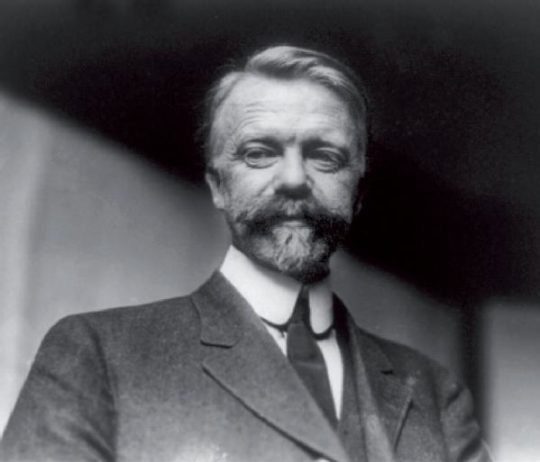Organizational Structure Organizational Structure is the strategic manner by which organizations arrange (or rearrange) themselves. This is essentially important in determining how organizations plan on utilizing their resources, particularly their human resources. To do so efficiently, certain questions need to have precise answers such as the specific responsibilities of each individual within the organization, to whom exactly they report and most importantly the coordination process that is to be implemented to bring together all these people and processes simultaneously. Bearing in mind that any framework followed needs to be consistent with the organizations main objectives, a formal channel defining the lines of authority from top to bottom (i.e. Hierarchy of Authority) is established which identifies clearly who is responsible for which personnel and/or tasks. Traditionally, the authority of decision-making has been a centralized process (i.e. directed to higher-level management), but with increasing challenges & innovation in recent times, many organizations Continue reading
Management Concepts
Transfer Pricing Methods
In a simple terms the term Transfer pricing refers to the prices that related parties charge one another for goods and services passing between them. The most common application of the Transfer pricing rules is the determination of the correct price for sales between subsidiaries of a multinational corporation. These prices can be used to shift profits to tax-favored jurisdictions, If in a transaction between a subsidiary in a high-tax jurisdiction and another in a low-tax jurisdiction, the high-tax subsidiary charges a price below the “true” price, some of the group’s economic profit is shifted to the low-tax subsidiary. Obviously taxpayers would want to engage in this sort of behavior because it can significantly reduce their taxes. If there were no limitations on this behavior, the entire income of multinational corporations would be taxed at the lowest tax rate in the world to zero rate of taxation. Consequently most countries Continue reading
Henri Fayol – Father of Modern Management Theory
Henri Fayol was a French industrialist and manager, working in the mine industry and looking for applicable solution to business management. He went to school in Lyon (the second largest city of France) and enrolled at the engineering school of Saint-Etienne (Ecole Nationale des Mines). He received an education as a mine engineer and graduated in 1860 from this school at the age of 19. He was first employed as an engineer at Boigues, Rambourg and Co. In 1874, this company became Commentry-Fourchambault SA or Comambault). It is important to notice he spend all his professional life in the same company experiencing its expansion and knowing well its structure and production methods. Fayol was first remarked as an engineer when he wrote a paper proposing a solution to fire hazard, fire fitting and spontaneous combustion in mine, destructing men and installations. In 1866, he was appointed director of a single Continue reading
ERP Software Assessment and Selection
ERP Software Assessment Enterprise Resource Planning (ERP) has changed the way the multi-location companies work. All the departments in one location share a single database. And a remote sales manager can access this database and release purchase orders. One can extend this to the suppliers as well. The suppliers can see the stock of their product in your inventory and can replenish the stock immediately to the minimum stock level. All these are possible if you implement your ERP well. However, your ERP shall have the features that may be required tomorrow. Hence, it is important that you do a proper Erp Software Assessment. It is not easy to decide on a single ERP. Not all the ERPs may suit to your operations. If you have expertise internally to make Erp Software Assessment, you may go ahead with the inquiries. ERP software is expensive. Implementation is more expensive. And you Continue reading
What are the Characteristics of a Good Leader?
A leader is destined a person who is leaded by the other persons. On the other hand, a leader is also must consequential to motivate security to get followers a leader hence they should to have concentrate, aim, and guidance and improve them with some expressions, opinion and action. Leadership is a mostly about a management activity which like communication and personally will control it and will be afford to achieve the company s goals. Other than that, the leader is knowledgeable to make people satisfied with themselves by accretion their self esteem. It is important to shatter down hurdles and create links, which is to demonstrate hurdles among departments, organisations, employees and customers. The leaders challenge is to build and spend in relationships and also makes a communication environment to his followers. The leaderships actions must help the team to get done the objectives, and fulfilling needs. A leader Continue reading
Different Types of Innovations
Innovation is a very diverse term. In general, innovation means exploiting new ideas or change existing ones for the betterment. Innovation focuses on being creative at work. It can be technological, which includes product innovation or process innovation. Also, it can be related to changing business model, exploiting new markets, and developing new processes. The main aim of innovation it so make the business more successful. This can be done by increasing market share of an existing product or introducing a new product or reducing the cost of production. Innovation is important for both employees and the owner of the business. For the owner of the business, innovation helps to keep up with the competition. With the fast growing pace of competition, the organizations have to be on toes to keep an eye on the work of their competitors. The new processes or technologies developed by the competitors can be Continue reading


